Arthrosis of the knee joint (or called gonarthrosis) is a relatively common disease that has recently been discovered not only in older people, but also in younger people.
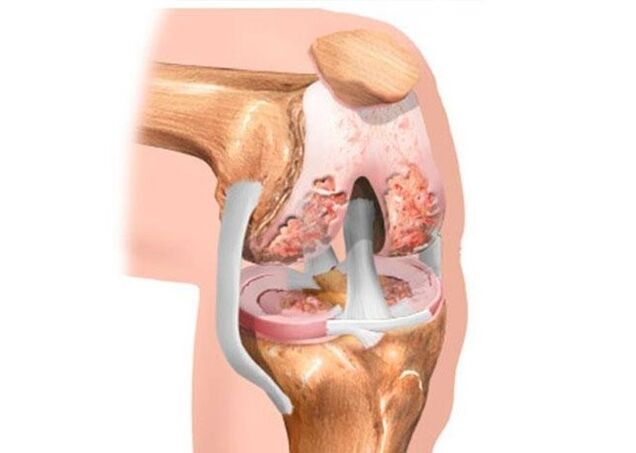
Pathology is one of the main causes of a patient’s disability if they refuse to seek help from a traumatologist or orthopedist.
Let’s consider why a patient has gonarthrosis of the knee joint, what its main symptoms are, how dangerous it is, and how effective the treatment of progressive knee destruction is carried out.
The main factor in the appearance of this pathology
Joints are always exposed to significant stress. The knees are particularly affected: they have to do significant physical work, which is why they wear out quickly. The process of deformation is intensified by the fact that the foot has to bear weight.
This fact in turn contributes to the fact that the knee begins to wear out, and the cartilage tissue of the joint becomes thinner and deteriorates.
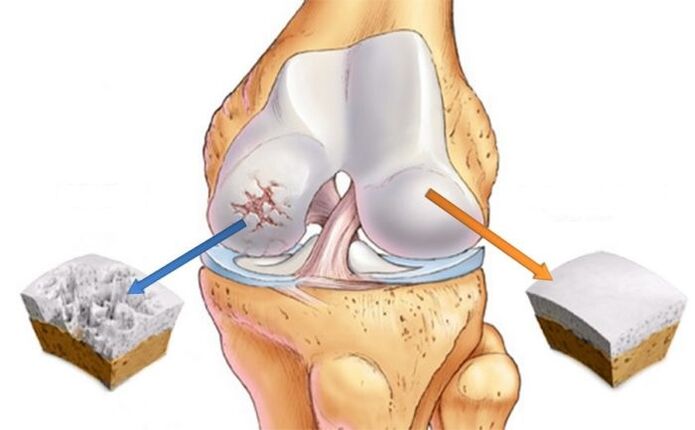
The following reasons can accelerate the pathological process in the joints:
- Patient weight gain. In the complete destruction of the joints occurs faster and more intensely. It has been shown that the disease referred to in obese people occurs three times more often than in people of normal weight.
- Intense sports, because the joints are always injured.
- Frequent fractures, previous knee injuries contribute to the fact that patients begin to deteriorate the process of articular cartilage from a relatively young age.
- Anomalies in the location of the bone - a deformity of the so -called valgus or varus.
- Poor development of the knee ligament apparatus leads to frequent, dislocated injuries. Due to the injury described, the patient developed arthrosis.
- Damage to the meniscus triggers the degenerative process of knee destruction.
- Constant stress leads to deterioration of the health of the musculoskeletal system.
- Disruption of metabolic processes in the body due to lack of nutrients and minerals (bones are most deprived of calcium).
In addition, the following people belong to the risk group:
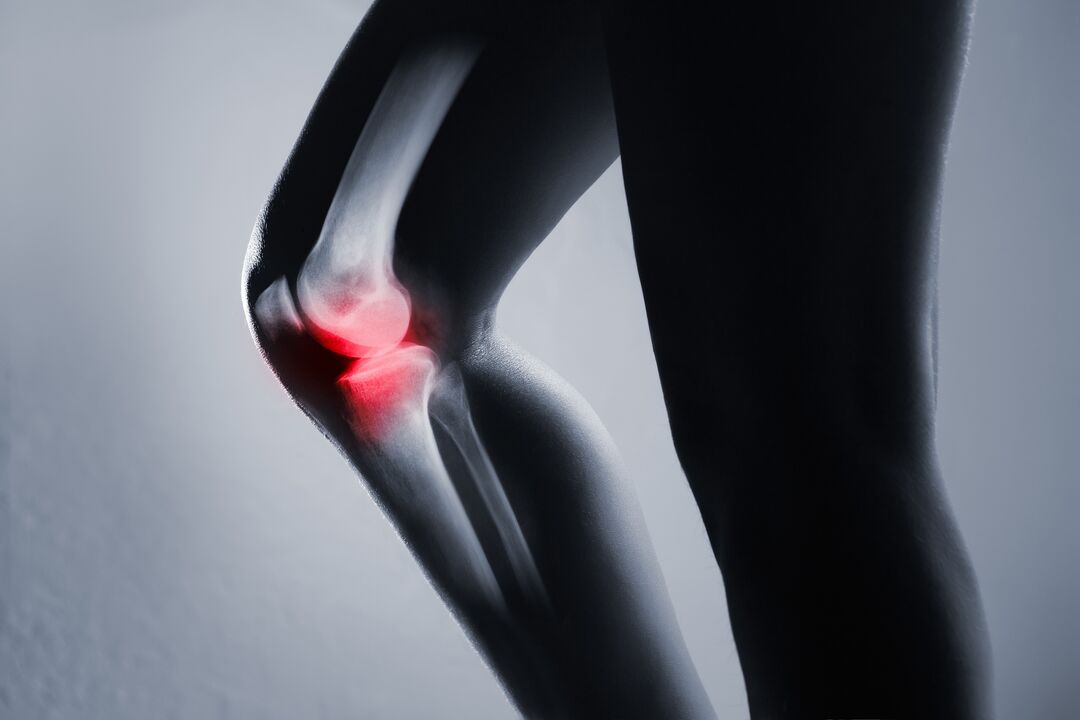
- all athletes;
- patients, regardless of gender, who have reached the age mark of 50 years;
- women who have begun menopause;
- patients with varicose veins;
- people with bad ancestry.
What is the stage of the disease
The pathology in question develops gradually, very slowly. At first, it may not appear, and the patient is in no hurry to see a doctor. However, the pathological process has already begun, and if it is not stopped in time, the function of the lower leg will gradually disappear, which necessitates the onset of disability.
So, at grade 1, the patient may notice that the leg is becoming tired, even though the load is small. Some limitations of knee joint mobility are noticeable, and significant snoring is heard during movement.
There is a marked onset of pain when the discomfort does not give rest especially in the morning. After the patient "disperses", the discomfort gradually decreases, again increasing after sports activity. At this stage of disease development, there is no obvious deformation of bone tissue.
2nd grade time, the pain got worse. Walking is disrupted because of this. Sometimes it becomes almost impossible for the patient to move normally, and even after a small load, a long rest is required. As the joint gap narrows, osteophytes grow on the bone, and pathological fluid accumulates in the joint.
At grade 3, pain occurs not only during work, sports, but also in a state of complete rest. The knee deformity is very noticeable, which makes any movement difficult.
Common symptoms of the disease
It is necessary to pay attention to the general symptoms of arthrosis of the knee joint:
- sick. It does not appear suddenly, however, mild discomfort can last for almost years. More severe pain due to trauma.
- Deform the knee (it retains its previous shape).
- Fluid accumulation in the intra-articular cavity. When the amount exceeds a certain value, what is called Baker’s cyst develops. A tight elastic object appears at the back of the knee. It is most noticeable when the joint is extended.
- Knee crunch is observed if the pathology is in the second, third stage. It differs significantly from what is observed in healthy people when bending or extending the knee. The sound felt loud and painful. Sometimes throbbing interferes with active movement.
- Reduces the normal range of motion in the joints. Usually the patient cannot bend, bending the affected leg. He was able to bend it at the right angle, further movement accompanied by severe pain.
- Knee stiffness occurs mainly at stage 3. Sometimes patients can only walk with bent legs.
- Increased pain when the weather changes.
- Large thinning prone. Occasionally, in further cases, bone exposure is observed. X-rays of the knee showed significant accumulation of osteophytes.
Variety of arthrosis
Depending on its origin, arthrosis is primary (continuing as an independent disease) or secondary - an existing pathological complication. Depending on the place of localization, the pathology is right, left and bilateral.

Based on the characteristics of the manifestation, the following types of diseases are distinguished.
- Arthrosis deformation is characterized by a chronic course, irreversible changes in the joint.
- Patellofemoral arthrosis develops due to prolonged intense physical exertion.
- Inflammatory arthrosis occurs due to a prolonged untreated inflammatory process in the joints.
- Dysplastic arthrosis develops due to congenital anomalies in the structure of the knee joint.
- Post -traumatic arthrosis appears as a result of frequent injuries to the musculoskeletal system.
- Metabolic arthrosis occurs with gout and other metabolic disorders.
- Postinfectious arthrosis occurs as a result of inflammatory pathology that is not adequately treated.
- The static form of the disease is detected when the knee is constantly exposed to increased stress.
- If the cause of the knee lesion is not established, the specialist talks about idiopathic arthrosis.
Characteristics of disease treatment
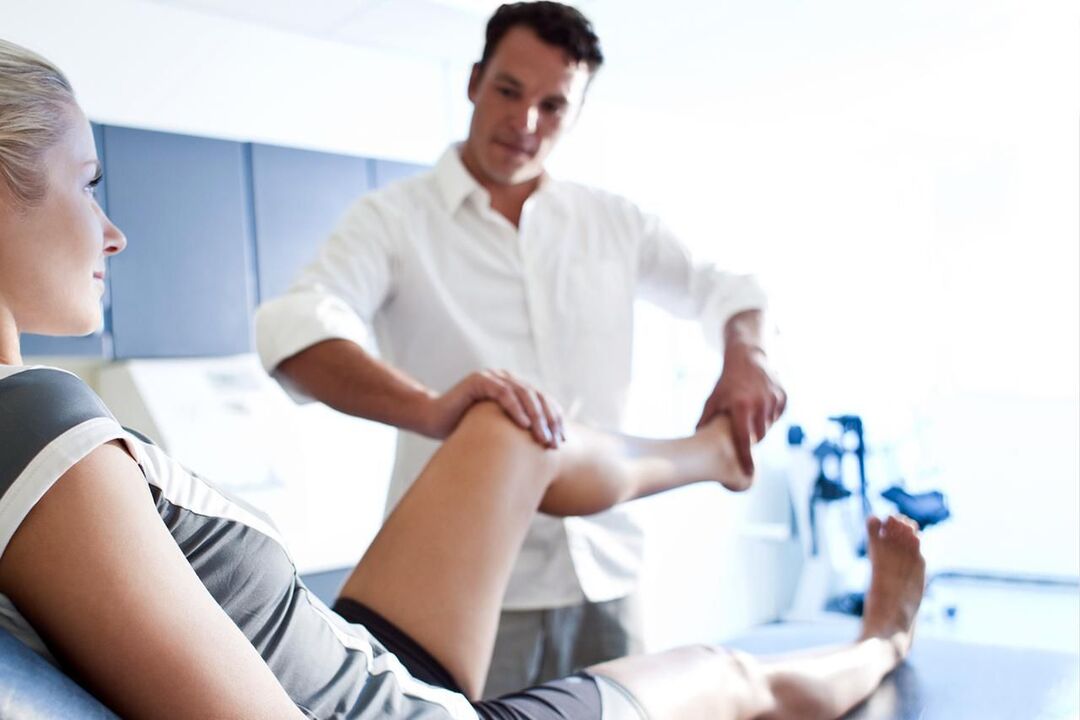
In the early stages of disease development, a rheumatologist and traumatologist is involved in treatment. If he has gone too far, the patient should consult a surgeon. Finally, in some clinics there are narrow specialists who deal with joint disease - arthrologists.
The scope of therapeutic measures depends on the extent to which the disease has progressed. If it is possible to eliminate the cause of the pathology in question at an early stage, then almost permanent recovery can be achieved.
The goal of any therapy is complete elimination of pain, restoration of destroyed cartilage, and an increase in the range of active movements in the joints.
The course of treatment with drugs is chosen exclusively by the doctor. The patient should not prescribe it to himself, as this can contribute to further destruction of the joint. The main medication prescribed:

- Non-steroidal anti-inflammatory tablets or ointments. Their action is aimed at relieving pain, inflammation in the affected area. Occasionally an injection into the articular cavity may be prescribed.
- Products that increase blood circulation in the knee. It is a muscle relaxant, antispasmodic. The latter relieves pain well.
- Products that restore articular cartilage, improve normal nutrition in it.
Novocaine blockade helps relieve acute pain. Injections can be made from outside or inside the joint. The easiest and safest method is to give medicine from outside. With proper manipulation, the pain disappears immediately.
Strong NSAID -based ointments also help relieve pain. Keep in mind that you cannot use strong medications for long periods of time. Any medication, even the most effective, can have side effects and cause allergic reactions. This means self-medication for this serious disease is categorically not allowed.
Conservative treatment can be effective, provided the disease does not go too far. In the event of irreversible damage to the joint, surgical operation is indicated. Metal prosthesis implantation was performed.

Currently, this is the only way to restore knee mobility. The disadvantage of this operation is the limited service life of the prosthesis, the high price.
In arthroscopy, all surgical procedures are performed by performing microscopic punctures on the joint. During surgery, fragments of cartilage are affected, clots, etc. removed from the joint. In stage 3 disease, the type of intervention described is ineffective.
To reduce the load, periarticular osteotomy is used. It is indicated to be done when the joint has not been completely destroyed.
To unload joints affected by degenerative processes, sticks and orthoses are used.
The duration of treatment for this disease depends on many factors. The course of therapy with chondroprotectors can be quite long - six months or more, because the effect shows itself quite slowly. A qualified healthcare professional can determine how long to take the medication you are prescribing.
The use of chondroprotectors in the treatment of arthrosis
To relieve pain, doctors prescribe nonsteroidal anti-inflammatory drugs (NSAIDs).
However, even new generation NSAIDs can not prevent the spread of pathological processes. To reduce the intensity of joint degeneration and restore its normal mobility, chondroprotectors are increasingly being used.
Modern medicine in this group helps restore joint tissue. This is due to the chondroitin content in it. It is a natural component of cartilage. Continuous intake of drugs of this group helps to restore it, improve health.
Despite the wide variety of medications offered, only a physician can determine the appropriate medication for a patient. Injections of chondroprotectors are not indicated for everyone, the drug itself is diluted in a special solvent.
Supplemental intake is indicated if the patient follows the rules of a balanced diet, taking other medications to support the joints.
The role of exercise therapy and physiotherapy in the treatment of gonarthrosis
With the pathology described, patients are categorically contraindicated in a recumbent lifestyle. Physical activity for any disease of the musculoskeletal system is only necessary for all categories of patients. Of course, it must be sinful; any exercise is performed exclusively under the supervision of a physician.
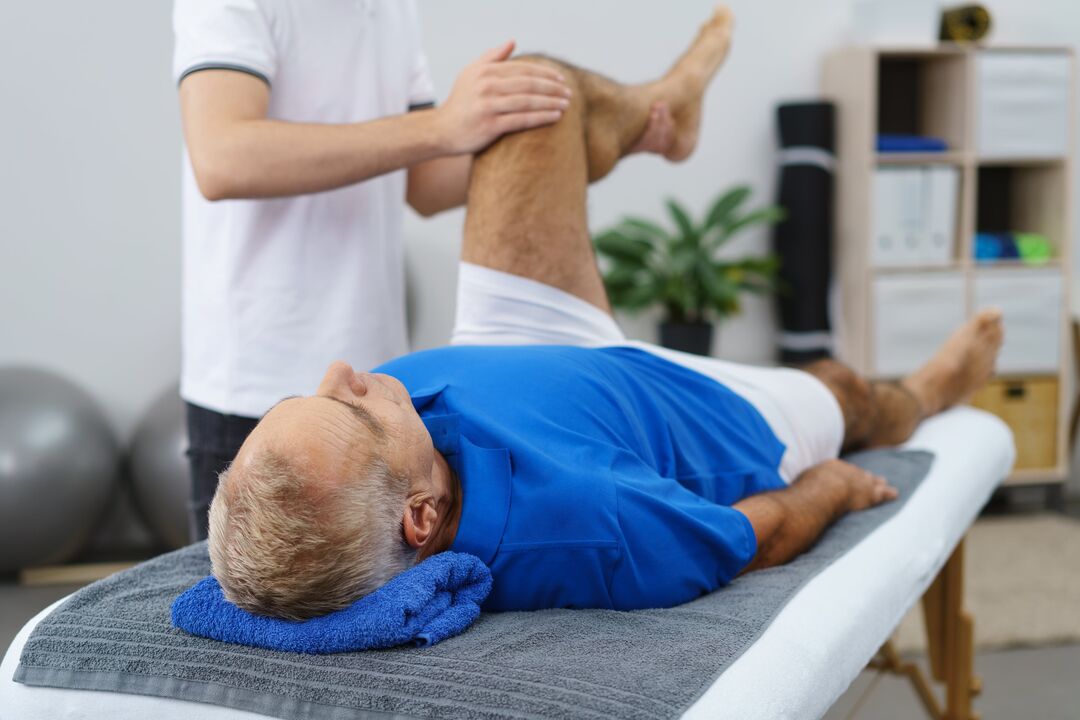
For each patient, the traumatologist or rehabilitation therapist individually selects special training. There is no need to think that the set of different classes available on the Internet will suit all patients without exception.
For some people, they can be very useful, while for others it will do great harm. All loads should be gentle, aimed at the fastest and most complete recovery of the function of the affected joint.
At home, it is recommended to do simple exercises: while lying down, lift your legs, hold for a few minutes and then lower them. It is harmless and can be done even by patients with the third stage of the disease. Under the supervision of a doctor, exercises are performed to stretch the joint capsule. But if it causes pain, then the implementation must be stopped immediately.
Physiotherapeutic methods for treating disease include:
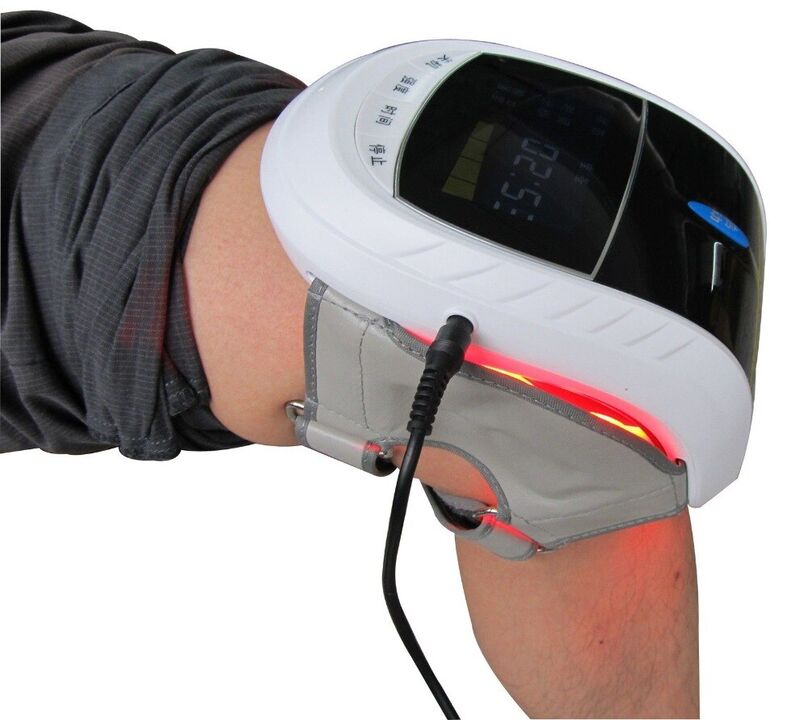
- massage (strictly forbidden to do without a doctor's recommendation);
- manual therapy (it should be as gentle as possible, not cause discomfort);
- medical laser treatment;
- effects on reflexogenic points using the best needles;
- treatment with heat or cold (again, you don’t have to do heat treatment at home);
- magnetic field treatment;
- phonophoresis;
- electrophoresis;
- paraffin therapy;
- ozokerite treatment;
- moxibustion with wormwood.
Nutrition for gonarthrosis
Proper nutrition is the foundation for successful treatment of degenerative diseases of the musculoskeletal system. Due to improperly formulated diet, patients may gain weight. Lack of vitamins, microelements exacerbates the pathological course.
All people with gonarthrosis should increase the amount of foods enriched with vitamins and minerals in their daily diet.
Nutritionists recommend carefully monitoring the caloric content of food. Fasting or extreme dieting is strictly prohibited. They can be harmful, weight will increase even more.
It is important to make sure that breakfast is balanced. You need to eat at least five times a day. For snacks, it is recommended to use fruits, bread.
The following foods and dishes are excluded:

- sweet soda;
- fatty foods;
- semi -finished products;
- spices;
- dishes containing flavor enhancers and odors;
- fatty meats;
- fried food;
- White cabbage;
- tomatoes and bell peppers;
- orange, lemon;
- chocolate;
- bananas, grapes (they are very high in calories).
Meat jellies and jellies are useful. They contain large amounts of collagen, which causes bones to be restored. Jelly meat is prepared so that it contains less fat, so its calorie content will be reduced.
The source of protein for those suffering from osteoarthritis can be dairy products - cheese, cottage cheese or kefir. It is very useful to take nuts. Make sure you include nuts in your diet.
It is necessary to observe the drinking regime. Provided there is no associated kidney disease, it is recommended to take about 2 liters of water.
On alternative treatments of this disease
Keep in mind that traditional methods cannot replace effective formal medical methods. And therefore, they should be used in complex treatment, there is no other therapy for this serious disease.
To relieve knee swelling, use regular soda. The cloth was moistened with soda porridge and wrapped around the knee. Above, to increase the effect of heat, it is advisable to attach a plastic bag. Keep the compresses prepared overnight.
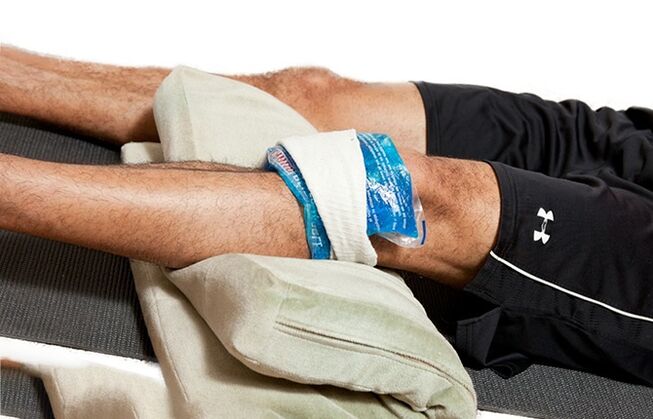
A similar compress is made with the addition of food vinegar. In parallel with the application of compresses, it is necessary to take tablets of acetylsalicylic acid.
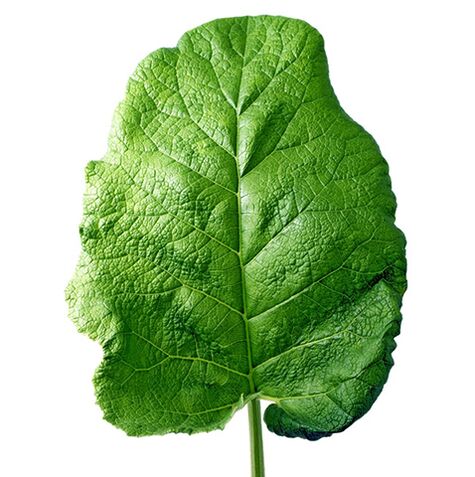
Burdock leaves are very useful for knees. Before using the leaves, it is advisable to lubricate the knees with vegetable oil. It is necessary that there were several layers of leaves.
All this is packed in plastic bags. Compressed with birch leaves is made in the same way.
Medical bile relieves inflammation, swelling and pain well. It is used in the form of heating compresses at night. Bile has almost no side effects.
Treatment with honey is carried out in cases where the patient is not allergic to it. After the sore joint is heated with a heating pad, it should be lubricated with honey and a gentle massage should be done. After that, attach the burdock leaves to the knees.
Prevention of gonarthrosis
Preventing a disease is easier than curing it. Precautions include:
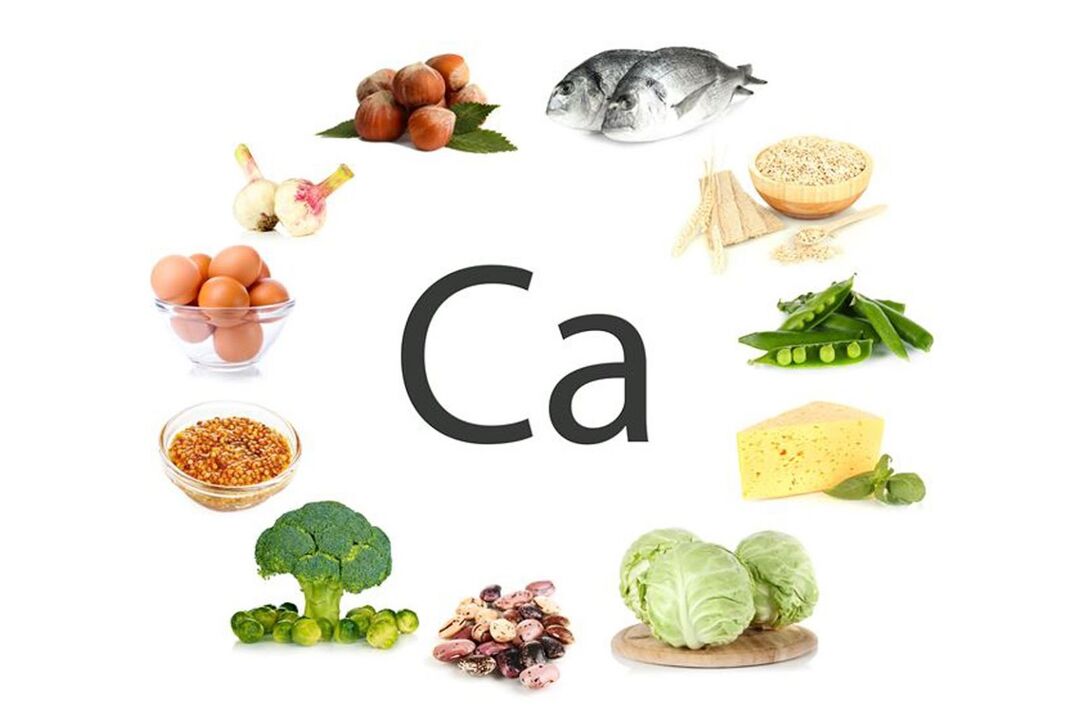
- a high quality balanced diet with the consumption of adequate amounts of protein, vitamins and calcium;
- eradication of bad habits;
- fighting overweight;
- normalization of physical activity;
- prevention of joint injuries during sports or heavy physical work.
When the first symptoms of a problem appear, it is important to see a doctor right away. In a clinical consultation, it is possible to find out which doctor is treating gonarthrosis. It is advisable to undergo a comprehensive medical examination to find out the cause of the development of the disease.
Osteoarthritis of the knee is a serious disease: if ignored, there is a risk of disability and complete immobility. To avoid this, you need to treat the affected joints properly. Therapeutic measures initiated early contribute to the almost complete remission of this pathology, helping to maintain high performance, quality of life.



















